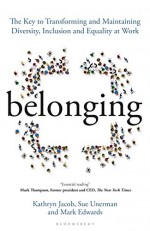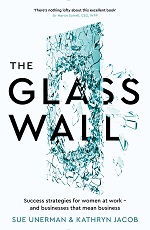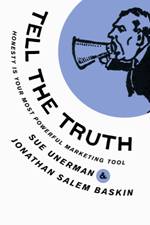
Lionel Shriver is not noted for her optimistic outlook on the world. She is an author and spokesperson, her breakthrough book was “We need to talk about Kevin”. This was a dystopian description of a mother’s journey to explain why her son killed 9 people at his high school.
Lionel was born Margaret Ann in 1957 and changed her name to Lionel when she was 15. She’s an American, but lives in Bermondsey.
I once heard her speaking about the NHS, and the dire state it finds itself in. (Not that this needs emphasising in a week of junior doctor strikes, but to quote the British Medical Association: “The NHS is experiencing some of the most severe pressures in its 70-year history. The COVID-19 pandemic is just the tip of the iceberg – the health service has been facing years of inadequate planning and chronic under-resourcing.”)
Shriver commenting on why this is difficult to fix (and bear in mind that there is no NHS in America), said: “However bad things are they can always get worse. Better the chaos you know than the chaos that you don’t know”.
This is the very opposite of the mindset that you need for transformation and change. It is why people in all kinds of sectors cling on to outdated and anachronistic practices and fail to take advantage of opportunities and grow.
The UK editor of Campaign Magazine, Maisie McCabe wrote a leader denouncing the failure of creative agencies to embrace change. She notes that this has led to a disappointing “quality of output”.
Creative agencies however are full of smart, creative people. Are they also too full of people who like control and predictability over the potential chaos of the unknown?
It might be a bit unfair to pick only on creative agencies. The tendency for managers to resist change in favour of things they know they can deal with is across our industry, across the UK as a whole (with a few and of course notable exceptions).
What proportion of leaders truly embrace change? How many of our people love the new?
Statistics state that just one in five people in general at work want to step out of their comfort zone. If the comfort zone is heritage status quo, then any business in our industry needs a much higher proportion than this.
We are in the new communications economy, where change is continuous and accelerating. If you have built a career on certainties that are now redundant its crucial to be open to new learnings.
For generations (according to a survey from Deloitte, quoted in The Economist) Americans have picked TV and film as their favourite home entertainment, those under 25 now prefer gaming. Although gaming is specially favoured by the under 25s (9 out of 10 Brits of that age game (what is the other one doing?)), two thirds of people in rich countries play, nearly half of them are women and half of the population aged 55 to 64. At Snoop’s appearance last month at the O2, the millennial woman in the row in front of me was playing a word game on her phone during the support act. On the tube home a Baby boomer woman sitting next to me was playing patience on her smart phone. Gaming is a mass medium, whether it fits with heuristics of creative and comms agency planners or not.
On Founder’s day at EssenceMediacom, Andrew Shebbeare stated: “Step change feels like an existential threat but sitting still is really the existential threat”.
We all need to embrace change and potential chaos to deliver customer value, not necessarily with advertising but with data informed comms, creative and tech fit for the new economy.






If you can measure it, you can improve it. If you are measured, you will game it.
May 30th, 2023If you can measure it, you can improve it.
Dr J is one of the greatest basketball players ever. Julius Winfield Erving 11, better known as Dr J won 3 NBA championships, 4 most valuable player awards and is an inductee of the Basketball Hall of Fame. In 1994 Sports Illustrated named him one of the 40 most important athletes of all time. He has a reputation for bringing artistry to the slam dunk.
I saw him speak at a Converse basketball shoe marketing conference in the 1990s, just after he’d retired. He described his upbringing in New York. He said whatever he did as a kid, he continually tried to improve. If his mother sent him to the store to buy milk he would add excitement to the chore by trying to beat his personal best running to and from the shops and up and down stairs to the apartment. Through measurement came both improvement in speed, and satisfaction of growth.
If you are measured, you will game it, prioritising the targets even at the expense of the wellbeing of people and indeed companies.
Targets for schools is one prime example of this. When the government set exam targets for school children commentators and experts pointed to the harmful outcomes for many pupils. One National Union of Teachers report stated: “Teachers object passionately to the accountability agenda imposed on them because of the consequences that flow from it. These are undermining creative teaching and generating labels which limit students’ learning. Crucially, they also threaten children’s self-esteem, confidence and mental health.”
Alfie Moore is an ex-cop who now works as a stand-up comedian. His insider take on policing is both funny and sad. One of his routines takes on the extreme outcomes of the target culture in the police. He tells a story of a man who tries to report a burglary when new targets (to reduce the number of burglaries) have made recording more burglaries against policy (as recording them as other things means that the target gets met, even if the burglars continue to rob). He says: “the guy shows the attending officer scratch marks around his patio door. The cop says: ‘That’s badgers. Badgers have done that.’ And the guy says: ‘ But, they’ve been away with my 42-inch colour TV.’ The cop replies: ‘Must have been two of them. Sometimes they’ll work in gangs.’” This month he commented on Twitter on a story that a retired police officer had carried out breathalyser tests on himself to meet targets: “Well they did say that meeting performance targets was a priority”.
So, targets are good, and targets are bad. Without targets how can you measure progress, but with targets you have to be aware of the externalities of people only focussing on what is measured.
One tactic is the anti-target. As well as setting an objective also set an anti-goal. Be clear on what you don’t want the team to deliver?
Andrew Wilkinson, successful entrepreneur and founder of Tiny Capital, set out his schedule of anti-goals on Medium in 2007. The list of 7 includes: “Never schedule morning meetings, sleep in when necessary” which I know would strike a chord with many people who are trapped in the alpha patriarchal schedules that suit the minority few who mainly set rules for business.
If the goal is to drive profitability, then it might be crucial to set an anti-goal to ensure that you don’t optimise profit at the expense of growth (this might seem redundant but I’ve seen modelling optimisations to profit at all costs that ends up in a non-optimal position).
Measurement is good, but to be effective targets need context and nuance.
Posted in MediaComment | Comments Off on If you can measure it, you can improve it. If you are measured, you will game it.